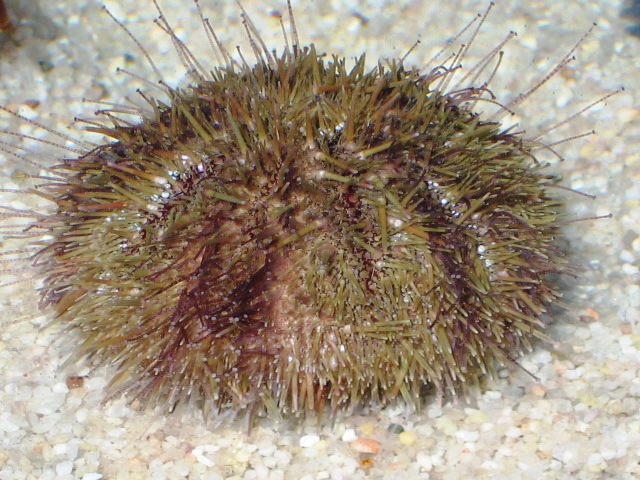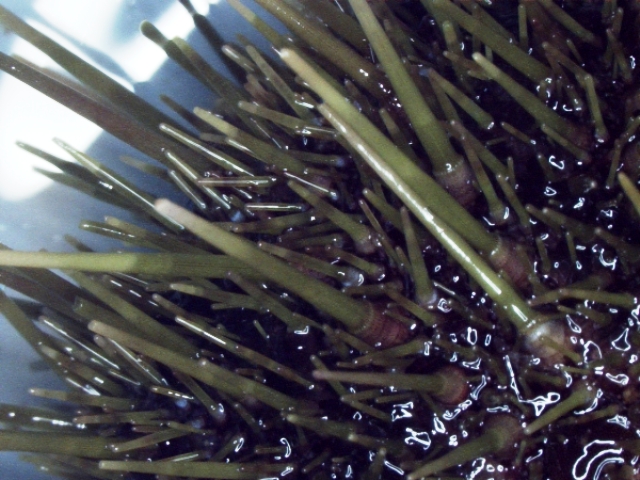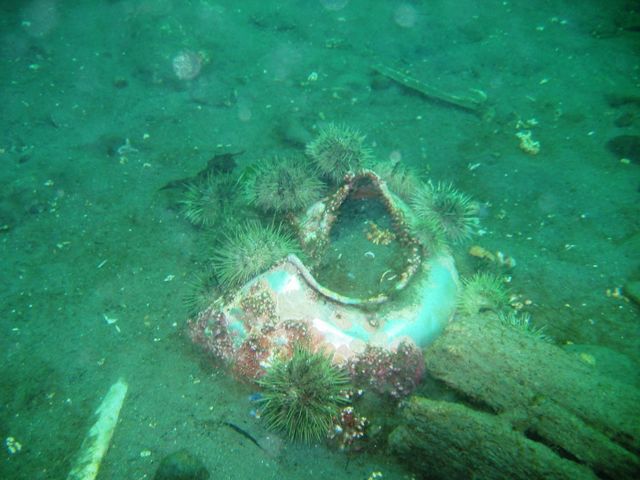Green Sea Urchin

Scientific name: Strongylocentrotus droebachiensis
Phylum: Echinodermata
Class: Echinoidea
Description: The size of green sea urchin is up to 3in. diameter, and is covered with sharp moveable spines and tube feet. The spines are no longer than 1/3 of width of test.
Distribution: They are found Arctic south to Cape Cod , in deeper water, up to 792m deep. In rocky shores of Newfoundland , green urchins are found just below or at the low tide mark.
Locomotion: Green sea urchin move by use of podia (tube feet) and movable spines. The way of tube feet work the same way as described for sea stars.
Food gathering: Green sea urchins feed mainly on algal material, bryozoans and dead animal matter. They can devastate kelp beds. Spines and tube feet snare large pieces of food that are moved to the mouth. Here they are chopped into small pieces by 5, sharp pointed teeth held by complex set of jaws.
Gas exchange: Five pairs of “gills” are located around the mouth, and are the major gas exchange organs. Pressure within these gills is manipulated by the feeding apparatus.
Reproduction: The sexes are separated, with eggs being fertilized externally. They also have a free-swimming larval stage. Green sea urchin is with 5 gonads, one lying on the inside of each radius.
Interesting facts: In some areas of the world their gonads are considered a delicacy, eaten, cooked, marinated or raw. Sea urchins have few enemies, but are eaten by lobsters, gulls, and cunners, despite their spinners.
Images
 |
 |
 |
 |
 |
OSC Research
Mercier Lab - Research on reproduction, larval development, ecology and growth is carried out on a wide variety of marine invertebrates in this lab.